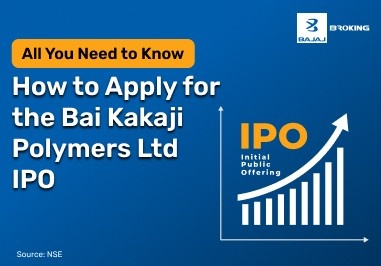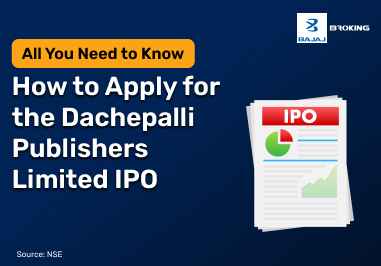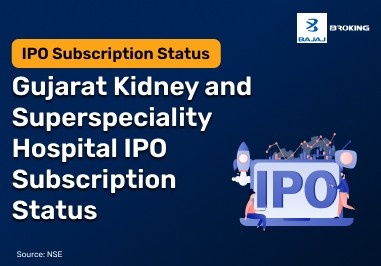The VWAP strategy, or Volume-Weighted Average Price strategy, is widely used by traders and institutions to assess a stock’s intraday value. It combines both price and volume data to provide a dynamic benchmark that reflects the average price at which a security has traded throughout the day. VWAP is particularly helpful if you are looking to evaluate the strength of intraday trends, determine support and resistance levels, or time your entries and exits more precisely. Unlike simple averages, the VWAP strategy gives greater weight to trades with higher volume, making it more relevant for real-time trading decisions.
Calculating volume-weighted average price (VWAP)
Understanding how VWAP is calculated helps you interpret it better. This indicator is updated continuously during market hours and reflects the relationship between price and traded volume. The formula captures cumulative data from the start of the trading session, giving you a weighted average instead of a simple mean.
Here are the key steps to calculate VWAP:
1. Multiply price by volume for each transaction
This step accounts for the impact of each trade based on size. It ensures that higher-volume trades affect the average price more significantly than smaller ones.
2. Sum up the total of price × volume values
This cumulative figure forms the numerator of the VWAP formula, reflecting the total traded value through the session.
3. Sum up the total trading volume
The denominator captures total traded volume, helping to scale the average based on all trades.
4. Divide cumulative value by total volume
VWAP = ∑ (Price × Volume) ÷ ∑ Volume. This gives the volume-weighted average price used as a dynamic intraday benchmark.
Entry & Exit Strategies Using VWAP
Traders often rely on VWAP to time their entries and exits based on market flow and volume behaviour. Using the VWAP strategy effectively requires interpreting whether the market is trading above or below the indicator, and what that implies for short-term price direction.
Before initiating trades, it helps to observe how price reacts near VWAP. The following strategies offer guidance:
1. Enter long positions when price crosses above VWAP
This move may indicate bullish momentum, especially if confirmed by volume spikes or broader trend direction.
2. Exit or avoid long trades when price falls below VWAP
A breakdown below VWAP could signal a shift in sentiment, making it a good point to reassess your position.
3. Use VWAP re-tests as confirmation levels
If price returns to VWAP after breakout or breakdown, observe whether it holds or rejects for trade validation.
4. Place stop-loss orders just beyond VWAP
Using VWAP as a stop-loss level gives trades a structure, limiting losses if price reverses unexpectedly.
Importance of VWAP
The VWAP strategy holds relevance across multiple trading styles and market participants. For you as a trader, it offers a real-time benchmark for assessing price fairness during the day. VWAP is not a predictive tool but a reactionary one—it shows what has happened in relation to volume and price so far. This makes it useful for comparing execution efficiency and determining whether your trade aligns with institutional behaviour. VWAP also helps prevent impulse-based trading by anchoring your decisions around a volume-adjusted price, encouraging you to think in terms of broader market consensus.
Applying VWAP
Applying the VWAP strategy in your trading requires context and discipline. You should not treat VWAP as a standalone signal but as part of a larger system involving trend analysis, volume patterns, and momentum. It works particularly well in intraday trading because it resets every session, reflecting only that day’s action.
Here is how you can apply VWAP effectively:
1. Use it as a trend confirmation tool
VWAP above price may confirm bearish trends; price above VWAP may support bullish trends.
2. Combine with other indicators like RSI or MACD
This helps avoid false entries and strengthens conviction when VWAP aligns with other technical signals.
3. Set alerts for VWAP crossover points
This ensures you do not miss key turning points where volume and price align at the VWAP level.
VWAP Trading Example
Imagine a stock opens at ₹500 and quickly rises to ₹510 with heavy volume in the first 30 minutes. VWAP at that point calculates around ₹508. Later in the session, the price falls back to ₹508 and consolidates. If you observe the stock holding this VWAP level despite a wider market dip, it may act as support. In this scenario, a long entry near ₹508 with a stop-loss just below VWAP could align with the strategy. You are using volume and price consensus to validate the entry. This is how VWAP can help manage trades with more structure and clarity.
VWAP for Day Traders vs. Institutions
VWAP is used differently depending on your role in the market. The table below explains how both groups apply the VWAP strategy:
User Type
| How VWAP is Used
|
Day Traders
| Use VWAP for intraday entries, exits, trend direction, and to confirm price breaks.
|
Institutions
| Use VWAP to benchmark trade execution quality and minimise market impact of large orders.
|
Day traders often apply VWAP to spot short-term opportunities, while institutions view it as a performance metric. For you, as a retail trader, understanding how institutional orders move around VWAP can help you time trades better and align with broader market flows.
Conclusion
The VWAP strategy is a versatile tool that helps you navigate intraday price movements with volume-weighted context. By integrating both price and traded volume, VWAP offers a deeper insight into how a security is behaving within the session. Whether you are entering a position, managing risk, or identifying support and resistance, VWAP brings a layer of objectivity to your decision-making. It does not replace your trading system but complements it by anchoring your actions around a more institutionally-influenced benchmark. Used thoughtfully, the VWAP strategy can bring structure to your daily approach and reduce guesswork.














